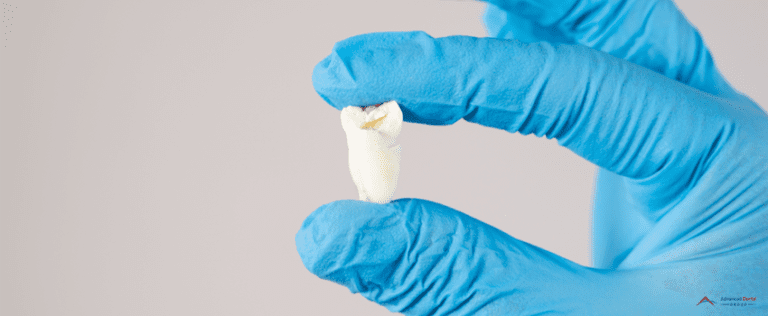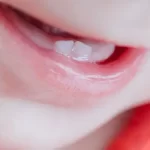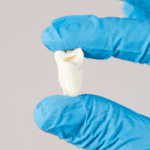Snoring can be annoying. If you have experienced living with people who snore loudly, you know how irritating it can be. However, loud snores are probably some warning signs that a person is suffering from serious illnesses such as obstructive sleep apnea. The next time you encounter a person with serious snoring issues, you might want to encourage him/her to consult a doctor to understand how to treat sleep apnea.
Sleep Apnea
Sleep apnea is a potentially serious sleeping disorder. People who suffer from this condition show disruptive breathing often. The three main types of apnea include central, complex, and obstructive sleep apnea (OSA).
1. Central
Contrary to OSA, central sleep apnea disorder (CSA) is a more dangerous respiratory disease symptom.
CSA refers to the interruption of breathing during sleep due to the lack of activity from the respiratory muscles (interrupted communication from the brain) while the body is at rest.
CSA commonly occurs in people over 40 years old and can result from an unhealthy diet and lifestyle.
2. Complex
Mixed apnea, also known as complex sleep apnea disorder (CompSA), is a mix of OSA and CSA. Initial impressions may be that it is OSA. Upon closer inspection, however, you will see that the signs are the result of the same issues as CSA.
Further studies are needed to understand the causes and treatment for CompSA fully.
3. Obstructive
Obstructive Sleep Apnea (OSA) is often observed in many people, making it the most common type of apnea.
So what is obstructive sleep apnea exactly? OSA happens when the muscles in the upper respiratory system such as the tongue and palate relax during sleep, closing the airway and interrupting the regular breathing pattern.
OSA pushes a person to breathe through the mouth. Such a mechanism can lead to various dental issues. The relaxation of the muscles in the upper respiratory system results in snoring, which is why the action is closely associated with OSA. Bruxism, or the continuous grinding of teeth, is one of the effects of OSA on a person’s dental health, including disorders on the temporomandibular joint (TMJ).
Symptoms of OSA
While the common symptom of OSA is snoring, there are other warning signs that you need to be familiar with to identify the disorder. Other symptoms of obstructive sleep apnea include:
1. Breathing Pauses
When the muscles of the upper respiratory system get too relaxed, it leads to the temporary collapse of the airways. This temporary collapse causes the airways to close and prevent air from flowing.
2. Gasping For Air
Gasping for air follows the events of the breathing pauses. Once air goes through the collapsed airways, the brain sends signals to the diaphragm to inhale. The sudden inhalation is what causes the gasping.
3. Dry Mouth
As air passes through the mouth, it temporarily disables the mouth’s saliva production. The absence of saliva and moisture in the mouth causes dryness. This can also encourage the bacteria in the mouth to multiply, eventually causing bad breath.
A person suffering from OSA often experiences dry mouth because breathing is primarily done through the mouth.
4. Hypersomnia
Excessive sleepiness during the day or hypersomnia is common in people who suffer from obstructive sleep apnea. A person can wake up from sleep by constantly gasping for air, which can lead to difficulty in getting back to sleep.
5. Insomnia and Limited Attention Span
The inability to go back to sleep because of constant gasping for air can develop further into insomnia. In turn, insomnia can cause a person to have a short attention span and have difficulties remembering simple information and accomplishing tasks.
Causes of OSA
Obstructive Sleep Apnea has a variety of causes. While some people claim that this condition can be hereditary, medical professionals state that it is quite unclear whether or not OSA can be passed down from parent to child. Although old, a study from 2009 states that it may be hereditary because of the similarities in the jaw structure of a parent and child. However, the consensus is that there is no certainty that obstructive sleep apnea can be passed down through genes.
On the other hand, medical professionals agree on one thing: lifestyle choices can directly affect sleeping patterns and cause obstructive sleep apnea. Here are some of the causes of OSA.
1. Obesity
Excessive weight is the most common cause of OSA. When a person gains weight, fat deposits can concentrate on the neck, creating what is termed pharyngeal fat. These neck fats can block the airways once they relax during sleep.
Excessive weight can also expand the width of the abdominal area. Once this happens, it is possible for the diaphragm can get compressed. In turn, it causes difficulty in inhaling air.
2. Smoking
Smoking tobacco and cigarettes pose several threats to the respiratory system – from the mouth down to each alveolus of the lungs. A 2019 study from Advances in Respiratory Medicine stated that smokers have a higher risk of experiencing OSA than non-smokers.
Smoking can increase inflammation and fluid retention in the airways, encouraging them to collapse temporarily.
Risks of OSA
Although OSA is relatively harmless and can be easily corrected, it can worsen and complicate other issues in the body.
1. Heart Disease
Patients who suffer from CSA and CompSA are more likely to experience abnormal heart rhythms or heart arrhythmia. Abnormal heart rhythm can also lead to other cardiovascular diseases such as heart failure.
2. Stroke
Although stroke is connected with cardiovascular failure, it can also be rooted in the inability of the heart to pump blood correctly towards the brain. Untreated OSA may cause erratic blood flow towards the heart that will affect the brain’s functions.
3. Diabetes
When a person stops breathing, carbon dioxide, the waste product of cellular respiration, stays inside the body. This is harmful, especially to people with diabetes. The increase in carbon dioxide in the body triggers insulin resistance, leading to a higher presence of sugar in the blood.
Devices For Sleep Apnea
Doctors have different opinions on how to treat sleep apnea, but most prescribe breathing machines for sleeping. These devices can be found in most hospitals, as well as other medical supply stores. Patients who undergo therapy to correct OSA are required to have such devices for sleep apnea to aid breathing patterns.
1. Position Pillows
Some people snore due to their sleeping positions. Some positions can compress the diaphragm or the nasal pathway.
OSA patients should not sleep on their stomachs, according to medical professionals. If they are forced to do so, they should rest their foreheads on a pillow with their head down.
A position pillow is one of the best sleep apnea devices available to help manage snoring. A low-loft pillow under the stomach and pelvis will help maintain your spine’s natural curve so that air flows freely from the nose to neck.
2. Sleeping Masks
Some of us can’t sleep if a light grazes in a room. A simple solution to block lights is to wear a sleeping mask. Early renditions of the sleeping mask are simply a piece of cloth that a person wears over his/her eyes to encourage sleep.
Modern versions of the sleeping mask now have specialized features such as an internal gel pad to provide cooling to relax the eyes.
3. Snoring Bands
Smart technology has taken over our everyday lives. In medicine, smart technology sleep apnea devices are used to aid doctors and medical professionals in diagnosing underlying disease. Nowadays, manufacturers have developed snoring aids that use smart technology.
Snoring wrist bands are among the popular technology pieces that aim to aid people suffering from heavy snoring. They release small shock waves when snoring is detected by the sensors.
Another type of snoring band comes with a chin strap to keep the mouth closed during sleep.
4. CPAP Machine
Continuous Positive Airway Pressure (CPAP) machines are developed to help a person suffering from OSA to have an unobstructed airflow that prevents snoring and gasping for air. CPAP machines are probably the most popular sleep apnea devices in the market.
A CPAP sleep apnea machine has a mask that covers the user’s nose and mouth, or just covers the nose. Prongs are inserted directly into the nostrils.
5. Adaptive Servo-Ventilation Machine
An Adaptive Servo-Ventilation Machine (ASV) is designed to track and adjust the airflow pressure per the breathing pattern of a user. The ASV sleep apnea machine is created as an alternative to the CPAP machine.
Unlike the CPAP sleep apnea machine, ASV machines are smaller and can be used in a patient’s house. ASV machines alternate between high pressure and low pressure when inhaling or exhaling. This sleep apnea machine can also sense if a person has difficulty breathing through the mask that covers both nose and mouth and thus, adjusts the airflow accordingly.
6. Mandibular Advancement Devices
For those who prefer non-CPAP therapies, mandibular advancement devices for sleep apnea are the best equipment. These pieces of equipment prevent a person from snoring and enhance his/her breathing cycle.
7. Mouthguards
Mouthguards are most commonly used to avoid bruxism or teeth grinding. Athletes often use these items to prevent dental trauma and degradation when playing highly-physical or extreme sports. Medical professionals also suggest using mouthguards to cope with sleep apnea.
The three types of mouthguards are stock mouthguards, boil-and-bite mouthguards, and custom mouthguards.
Stock mouthguards fit the best and are easily accessible. The American Dental Association warns against stock mouthguards because they can be uncomfortable and make it difficult to talk.
Boil-and-bite protections are available in a one-size-fits all size. This mouthguard type can be boiled to ensure the perfect fit.
Lastly, custom mouthguards are specifically designed for a wearer’s mouth measurements. These are made in dental clinics or specifically by a patient’s dentist.
8. Tongue Retaining Device
Tongue Retaining Devices or Tongue Stabilizing Devices (TSD) holds the tongue in place to prevent snoring. Although it looks quite similar to a baby’s pacifier, TSDs are an effective snore-stopper. A TSD holds the tongue forward and keeps it in position throughout the night. First-time users of TSDs report experiencing soreness in their tongue and hypersalivation, which are normal reactions since the mouth is slightly open to fit the device.
Advanced Dental Group Helps You Deal With Obstructive Sleep Apnea
Learning what obstructive sleep apnea is can help you improve your overall health.
Advanced Dental Group can help you with mouthguards and OSA testing.
Advanced Dental Group can connect you with highly-skilled dentists in Bradenton, FL. They will keep your mouth healthy and prevent any oral problems or disorders.
Call us now!





